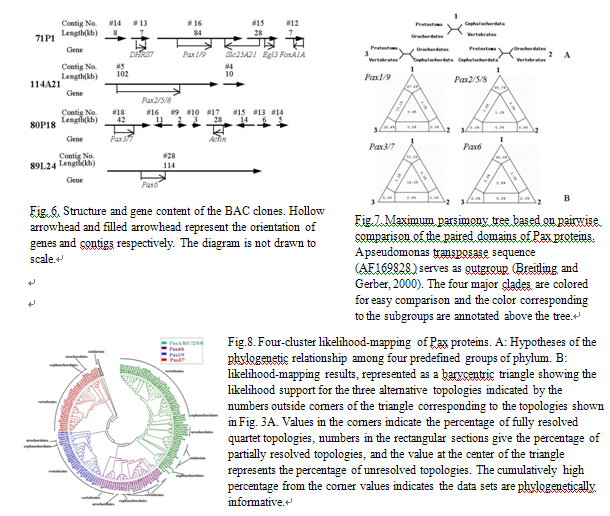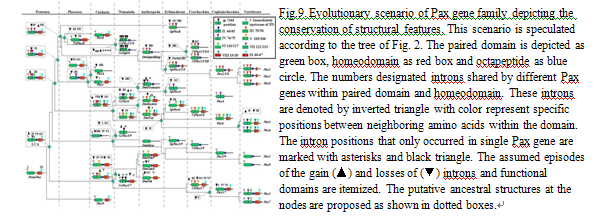Wang W., Zhou Y., Zhong J., Su B., Jin L., Wang Y.Q.*Genes and Genetic System, 2010. 85:193-206.
ThePaxgene family encodes a group of transcription factors whose evolution has accompanied the major morphological and functional innovations of vertebrate species. The evolutionary conservation throughout diverse lineages of metazoan and the functional importance in development renderedPaxfamily an ideal system to address the relationship inside Chordata phylum.In the present study, we sequenced and annotated four genomic regions containing Chinese amphioxus (Branchiostoma belcheri)Paxgenes, and retrieved homologous sequences frompublic database. In comparison with vertebrate homologues, the predicted amphioxus Pax protein displays a high sequence conservation. Evidences from the molecular phylogenetic studies and gene organization analyses supports cephalochordates have a much closer relationship to vertebrates than that between tunicates and vertebrates, contrasting to urochordate relatives hypothesis proposed by several latest studies. Analysis of phylogenetic topology derived from concatenated subfamily datasets uncovered a potential statistical bias of supermatrix approach. Furthermore, we deduced an evolutionary scenario ofPaxgene family. This scenario provided a plausible explanation for the origin and dynamics of thePaxgene members.



